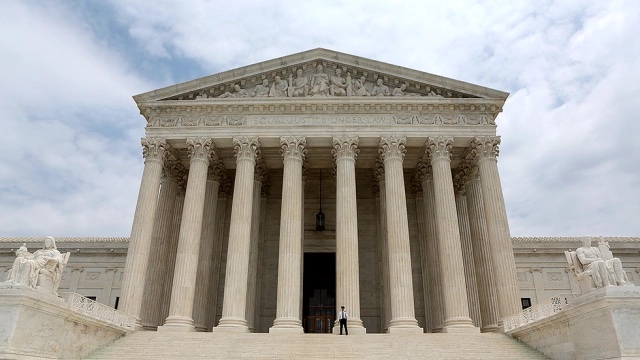The Hill, November 6, 2019
By JOHN KRUZEL
The Supreme Court on Wednesday appeared divided over how to deal with polluted waters that flow indirectly into rivers and oceans that are regulated by the federal government as the justices heard oral arguments in a major case over the Clean Water Act.
At issue in the case is whether Maui County in Hawaii violated the Clean Water Act by injecting wastewater underground that then seeped into the Pacific Ocean.
If the court finds the law applies to pollution that reaches national waters indirectly, after mixing with local groundwater, it could dramatically expand the federal government’s regulatory reach. A narrower interpretation of the Clean Water Act’s scope, on the other hand, would trim the edges of the landmark 1972 environmental law.
The case started in the spring of 2012, when four Hawaii environmental groups sued Maui County to stop a municipal water treatment plant from pouring millions of gallons of wastewater each day into wells running hundreds of feet deep, where the treated sewage combined with groundwater.
A study showed some of the wastewater later surfaced at popular beach areas, and the environmental groups said pollutants contained in the discharge had interfered with nearby coral reef and triggered invasive algae to bloom. They argued the county was operating in this way without a federal permit, in violation of the Clean Water Act.
The 9th Circuit Court of Appeals sided with the environmental groups. The court found the Clean Water Act applied to so-called point sources, which includes discharge pipes, even if a pipe does not pump treated sewage directly into national waters.
In Supreme Court oral arguments, lawyers for Maui County said the 9th Circuit had erred. Attorney Elbert Lin argued that the groundwater, by acting as an intermediary, severed the causal chain between the wastewater discharge pipes and the Pacific Ocean.
The Trump administration has also filed briefs in support of Maui and also joined in Wednesday’s oral arguments.
Both Lin and U.S. deputy solicitor general Malcolm Stewart argued the polluted water in question should be considered to have originated from a large diffuse area, known under the law as a “nonpoint source,” rather than from any specific set of pipes. Nonpoint sources generally are the responsibility of a state government, rather than the federal government, to regulate.
Some justices expressed concerns that this argument could provide a blueprint for polluters to avoid federal regulation by aiming a discharge pipe into the ground, even if it were in close proximity to national waters.
“You’ve just provided a road map,” Justice Elena Kagan, an Obama appointee, told the deputy solicitor general. “You know, put your pipe underground.”
Justice Sonia Sotomayor, another Obama appointee, worried about curtailing the Clean Water Act, which gives entities that create pollution an option to obtain a federal permit. Through its permitting scheme, the law is the only regulatory measure that aims to limit wastewater discharge, she said, rather than punish it after the fact.
“The problem I see is that all those other statutes have different focuses,” she said. “They’re remedial. They’re after the fact. This statute is preventative. We want to avoid having to clean it up. That’s why we give a permit.”
Counsel for the environmentalist groups said the Clean Water Act should apply if the pollutants can be traced back to the point source and the wastewater’s eventual deposit into U.S. waters was foreseeable.
But one recurring concern for several justices was whether the environmental groups’ position might impose too few limits on the power of federal regulators.
Justice Samuel Alito and Chief Justice John Roberts, both George W. Bush appointees, and Justice Stephen Breyer, a Clinton appointee, repeatedly asked about where to draw the line between federal and state authority.
“What concerns me is whether there is any limiting principle that can be found in the text and is workable and does not lead to absurd results,” Alito said.
A decision in County of Maui v. Hawaii Wildlife Fund is expected before July.
Original article URL:
https://thehill.com/regulation/court-battles/469255-justices-wrestle-with-reach-of-clean-water-act

